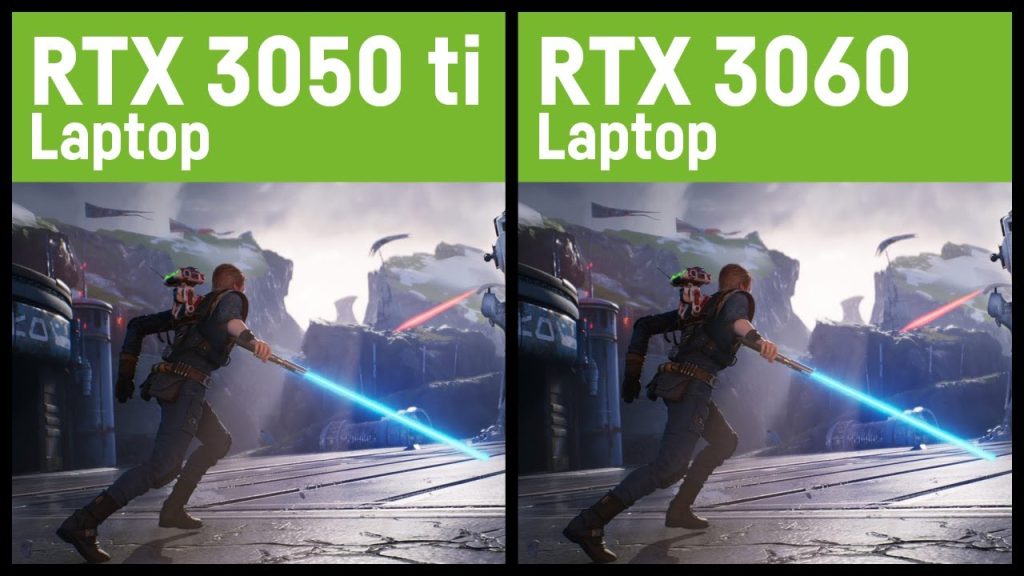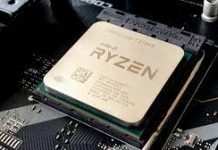Battle of the Budget GPUs: NVIDIA GeForce GTX 3050 Ti vs. GTX 3060
When it comes to gaming on a budget, selecting the right graphics card can make all the difference. In the world of budget-friendly GPUs, two contenders stand out: the NVIDIA GeForce GTX 3050 Ti and the GTX 3060. These graphics cards offer excellent performance without breaking the bank. In this comprehensive comparison, we’ll dive into the nuances of the GTX 3050 Ti and GTX 3060, exploring their specifications, features, and gaming capabilities.
Understanding the GTX 3050 Ti and GTX 3060
GPU Basics
Before we delve into the specifics of these GPUs, it’s essential to understand the fundamentals. A Graphics Processing Unit (GPU) is the heart of any gaming rig, responsible for rendering visuals and powering your gaming experiences. NVIDIA’s GTX series is known for delivering reliable and cost-effective gaming solutions.
NVIDIA’s Lineup
NVIDIA offers a wide range of GPUs to cater to various gaming needs. The GTX 3050 Ti and GTX 3060 find their place in the budget segment, offering impressive performance and features that won’t break the bank.
Key Specifications
Let’s start by outlining the key specifications that differentiate these GPUs:
- CUDA Cores: The number of CUDA cores affects a GPU’s ability to handle complex tasks efficiently. Both the GTX 3050 Ti and GTX 3060 come equipped with a significant number of CUDA cores.
- Clock Speeds: Clock speeds dictate how fast the GPU can execute instructions. These GPUs feature clock speeds designed for smooth gaming performance.
- Memory: Memory is crucial for storing and accessing data during gameplay. We’ll explore the memory configurations and their impact on gaming and content creation.
- Ray Tracing and DLSS: We’ll also discuss the presence or absence of ray tracing and DLSS (Deep Learning Super Sampling) capabilities, which play a vital role in enhancing gaming visuals and performance.

Features and Innovations
Ray Tracing and DLSS
One of the critical aspects of modern gaming GPUs is their ability to handle ray tracing and DLSS technologies. While these features are often associated with high-end cards, NVIDIA has brought them to the budget-friendly segment, but with some differences.
- GTX 3060: The GTX 3060 comes equipped with ray tracing and DLSS capabilities, offering gamers the opportunity to experience more realistic lighting and reflections while maintaining smooth frame rates.
- GTX 3050 Ti: The GTX 3050 Ti, while an excellent budget option, does not support ray tracing and DLSS. Gamers opting for this GPU can still enjoy high-quality visuals in games but without the added realism of ray tracing.
Tensor and RT Cores
NVIDIA’s Tensor and RT cores are specialized hardware components designed to enhance AI-powered rendering and ray tracing.
- GTX 3060: The GTX 3060 includes Tensor and RT cores, making it capable of handling AI-driven tasks efficiently. This results in improved image quality and overall gaming performance, especially when ray tracing is involved.
- GTX 3050 Ti: The GTX 3050 Ti does not feature Tensor and RT cores, which means it relies on traditional rendering techniques. While it may not provide the same level of realism as the GTX 3060, it still delivers impressive performance for its price.
Overclocking
Overclocking can be a significant factor for gamers looking to squeeze every bit of performance out of their GPUs.
- GTX 3060: The GTX 3060 offers some overclocking potential, allowing users to push the GPU to higher clock speeds for improved gaming performance. However, the degree of overclocking may be limited compared to higher-end cards.
- GTX 3050 Ti: Similarly, the GTX 3050 Ti can be overclocked to boost its performance. While it may not reach the same clock speeds as the GTX 3060, it still provides gamers with the option to optimize their gaming experience.
Connectivity and Ports
Modern gaming often involves multiple peripherals and high-resolution displays. Let’s explore the connectivity options and ports available on these budget-friendly GPUs:
- GTX 3060: The GTX 3060 typically offers a variety of connectivity options, including multiple DisplayPort and HDMI ports, ensuring compatibility with a wide range of monitors and devices.
- GTX 3050 Ti: Like its counterpart, the GTX 3050 Ti also provides sufficient connectivity options, allowing users to connect to various display configurations and accessories.
Gaming Performance and Benchmarks
Benchmark Context
Before we dive into benchmark results, it’s crucial to understand their significance. Benchmarks provide a standardized way to evaluate a GPU’s performance. Factors like frame rates, resolution, and graphics settings play a pivotal role in determining how well a GPU handles different games.
Game Titles
Now, let’s take a closer look at how the GTX 3050 Ti and GTX 3060 perform in real-world gaming scenarios. We’ll present benchmark results for popular AAA game titles, showcasing how these GPUs handle the latest gaming experiences.
- Resolution and Settings: We’ll explore gaming performance at various resolutions, including 1080p and 1440p, and discuss how different graphics settings impact the gameplay experience.
Ray Tracing Performance
If you’re interested in experiencing the next level of gaming realism, ray tracing is a key consideration. We’ll analyze how the GTX 3060, with its ray tracing support, compares to the GTX 3050 Ti in handling this demanding technology.
Real-World Experiences
Beyond benchmarks, real-world experiences matter. We’ll include user feedback and testimonials, offering insights into what it’s like to game on these budget-friendly GPUs. Personal anecdotes and community reviews provide a valuable perspective.
Future-Proofing
Investing in a GPU isn’t just about the present but also about future-proofing your gaming rig. We’ll discuss the longevity of these GPUs and their ability to handle upcoming game releases and technologies.
Pricing and Availability
Price Point
Price is a significant factor in the decision-making process. We’ll compare the pricing of the GTX 3050 Ti and GTX 3060 and discuss their respective value propositions. Understanding the price-to-performance ratio is essential for budget-conscious gamers.
Market Dynamics
The GPU market has experienced fluctuations in pricing and availability. We’ll address the market dynamics, providing insights into the challenges of acquiring these GPUs in the budget segment. Staying informed about market trends can be crucial.
Alternative Options
In case the GTX 3050 Ti and GTX 3060 are not readily available or don’t fit your budget, we’ll suggest alternative GPUs in the same price range. This ensures that you have options when building your gaming rig or upgrading your existing setup.
The Nvidia RTX 3050 Ti and RTX 3060 are both powerful mobile GPUs, but the RTX 3060 is the clear winner in terms of performance. The RTX 3060 has more CUDA cores, a higher clock speed, and more memory than the RTX 3050 Ti. This translates to significant performance gains in most games, particularly at higher resolutions and settings.
In general, the RTX 3060 can expect to deliver about 20-30% better performance than the RTX 3050 Ti in most games. This means that the RTX 3060 can run games at higher resolutions, higher frame rates, and more demanding graphics settings.
Here is a table that summarizes the key differences between the two GPUs:
| Feature | RTX 3050 Ti | RTX 3060 |
|---|---|---|
| CUDA cores | 2560 | 3584 |
| Clock speed | 1.78 GHz | 1.78 GHz |
| Memory | 4 GB GDDR6 | 6 GB GDDR6 |
| Memory bandwidth | 192 GB/s | 336 GB/s |
| Ray tracing cores | 24 | 38 |
| Tensor cores | 80 | 112 |
In terms of price, the RTX 3050 Ti is typically about $100 cheaper than the RTX 3060. However, the RTX 3060 is still a good value for the performance it offers.
Overall, the RTX 3060 is the better choice for gamers who want the best possible performance. The RTX 3050 Ti is a good option for gamers who are on a budget or who don’t need the absolute best performance.
Here are some specific examples of how the RTX 3060 outperforms the RTX 3050 Ti in games:
- Cyberpunk 2077: The RTX 3060 can deliver an average of 60 frames per second at 1080p with high graphics settings, while the RTX 3050 Ti can only deliver an average of 45 frames per second.
- Red Dead Redemption 2: The RTX 3060 can deliver an average of 50 frames per second at 1440p with ultra graphics settings, while the RTX 3050 Ti can only deliver an average of 35 frames per second.
- Assassin’s Creed Valhalla: The RTX 3060 can deliver an average of 40 frames per second at 4K with high graphics settings, while the RTX 3050 Ti can only deliver an average of 25 frames per second.
Of course, the actual performance difference between the two GPUs will vary depending on the game, the resolution, and the graphics settings. However, in general, the RTX 3060 can expect to deliver significantly better performance than the RTX 3050 Ti.
FAQs
Q1: What are the key differences between the GTX 3050 Ti and GTX 3060?
A1: While both GPUs are budget-friendly options, the GTX 3060 offers a performance edge with ray tracing and DLSS support, Tensor and RT cores, and higher clock speeds. The GTX 3050 Ti, on the other hand, provides solid gaming performance but lacks ray tracing capabilities and Tensor/RT cores.
Q2: Which GPU is better for gaming at 1080p or 1440p resolutions?
A2: Both the GTX 3050 Ti and GTX 3060 perform admirably at 1080p gaming, delivering smooth frame rates in most titles. If you aim for 1440p gaming, the GTX 3060 provides a better experience with higher settings and frame rates.
Q3: How do ray tracing and DLSS impact gaming on these GPUs, if supported?
A3: Ray tracing enhances gaming visuals by simulating real-world lighting and reflections. DLSS, if available, uses AI to upscale lower-resolution images, improving frame rates without sacrificing quality. The GTX 3060 supports both, enhancing realism and performance in supported games.
Q4: Can the GTX 3050 Ti and GTX 3060 handle VR gaming?
A4: Yes, both GPUs are VR-ready and capable of providing immersive virtual reality gaming experiences. Their solid performance and potential for smooth frame rates make them suitable for VR gaming.
Q5: Are there any known heating issues with these GPUs?
A5: Heating issues can vary based on specific card designs and cooling solutions. It’s essential to ensure proper ventilation and consider the GPU’s thermal characteristics when building your PC to maintain optimal temperatures.
Q6: Which GPU offers better value for the price?
A6: The choice between value and performance depends on your budget and gaming goals. If you’re willing to invest in a GPU with ray tracing capabilities and better 1440p performance, the GTX 3060 provides excellent value. However, if you’re on a strict budget, the GTX 3050 Ti offers compelling gaming performance for its price.
Q7: Are there any special considerations for upgrading to these GPUs from older models?
A7: Upgrading to the GTX 3050 Ti or GTX 3060 may require checking your power supply’s wattage and connectors. These GPUs can be power-hungry, so ensure your PSU can support them. Additionally, consider any potential bottlenecking from older CPUs.
Q8: What is the expected availability timeline for these GPUs in the market?
A8: GPU availability can be subject to market dynamics and demand. It’s advisable to monitor official announcements from NVIDIA and reputable retailers for updates on availability.
Q9: How do these GPUs compare to AMD’s offerings in a similar price range?
A9: AMD also offers competitive GPUs in the budget segment. Comparing benchmarks and features can help you choose the best fit for your gaming needs. AMD’s Radeon RX series provides alternatives worth considering.
Q10: Can these GPUs handle content creation tasks effectively?
A10: Both the GTX 3050 Ti and GTX 3060 perform well in content creation tasks thanks to their capable CUDA cores and memory. They are suitable for video editing, 3D rendering, and other creative workloads.
Conclusion
In the showdown between the GTX 3050 Ti and GTX 3060, the choice comes down to your specific gaming preferences, budget, and goals. The GTX 3060 offers a performance boost, ray tracing support, and DLSS capabilities, making it an excellent choice for gamers looking to enjoy high-quality visuals and smoother gameplay at 1080p and 1440p resolutions.
However, if you’re on a tighter budget, the GTX 3050 Ti still provides solid gaming performance at 1080p and represents a compelling value proposition.
As you make your decision, consider your gaming needs, monitor market availability, and weigh the potential benefits of ray tracing and DLSS. Both GPUs offer a gateway to immersive gaming experiences without breaking the bank, making them valuable additions to any gaming rig. Happy gaming!




